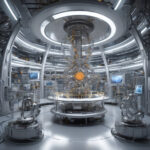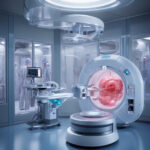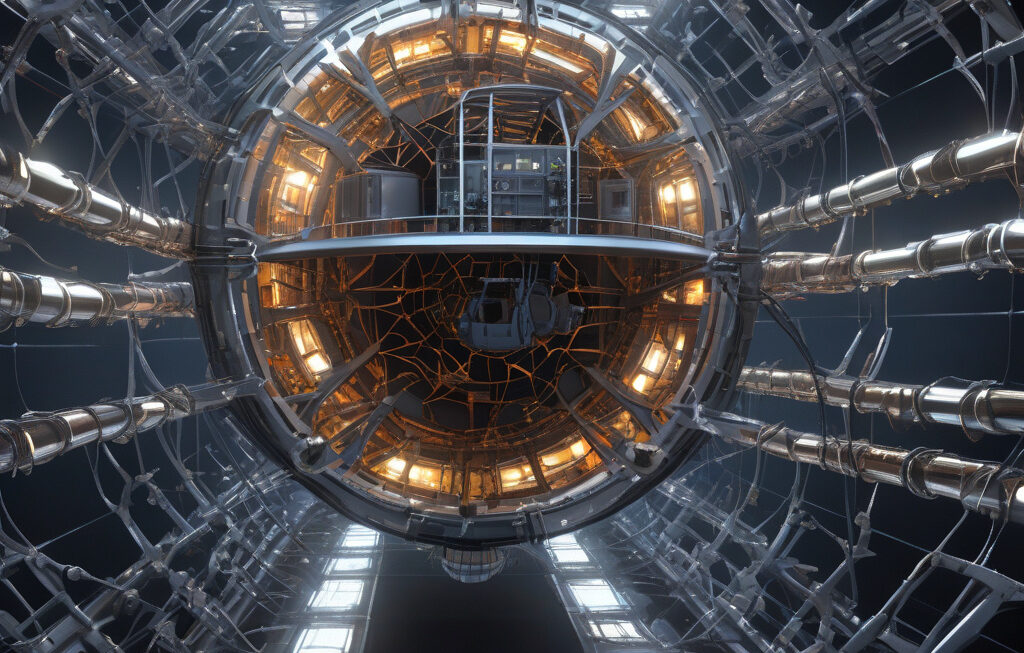sPHENIX Particle Detector Clears Key Test to Unlock Secrets of Big Bang Plasma
A powerful new particle detector has passed its first major test in the hunt for unraveling the mysteries of Big Bang plasma. The sPHENIX detector, located at the Relativistic Heavy Ion Collider (RHIC) at Brookhaven National Laboratory, has recently cleared a crucial milestone, demonstrating its capability to capture and analyze particles produced in high-energy collisions.
The sPHENIX detector is designed to study a state of matter known as quark-gluon plasma, which is believed to have existed in the early universe fractions of a second after the Big Bang. By recreating these extreme conditions in the laboratory, scientists aim to understand the fundamental forces that govern the universe and shed light on its evolution.
One of the key challenges in studying quark-gluon plasma is the fleeting nature of this state of matter. As soon as it is created in particle collisions, it quickly evolves into a myriad of other particles, making it difficult to observe directly. The sPHENIX detector, with its advanced technology and sophisticated design, is poised to overcome this obstacle and provide unprecedented insights into the properties of quark-gluon plasma.
The recent successful test of the sPHENIX detector marks a significant step forward in the field of nuclear physics. Scientists and researchers involved in the project are excited about the potential discoveries that lie ahead. By analyzing the data collected from the detector, they hope to answer fundamental questions about the origins of the universe and the forces that shaped its early stages.
The sPHENIX detector’s ability to precisely track particles and measure their properties is crucial for understanding the dynamics of quark-gluon plasma. With its intricate sensors and cutting-edge technology, the detector can identify different types of particles, their momenta, and their interactions with high accuracy. This level of precision is essential for reconstructing the complex events that occur in high-energy collisions and extracting meaningful physics results.
Moreover, the sPHENIX detector’s robust design and scalable architecture make it well-equipped to handle the extreme conditions present at RHIC. Its components are built to withstand the intense radiation and magnetic fields generated during particle collisions, ensuring reliable operation and data quality. This resilience is a testament to the meticulous engineering and planning that went into the construction of the detector.
In addition to its scientific significance, the sPHENIX detector represents a collaborative effort involving scientists, engineers, and technicians from around the world. The project has brought together expertise from various disciplines, including particle physics, accelerator technology, and data analysis. By working together towards a common goal, the research team has been able to overcome challenges and achieve remarkable results.
As the sPHENIX detector continues to collect data and perform experiments at RHIC, the scientific community eagerly anticipates the discoveries that will emerge. The insights gained from studying quark-gluon plasma have the potential to revolutionize our understanding of the early universe and the fundamental laws of physics. With each new observation and analysis, the sPHENIX detector brings us closer to unlocking the secrets of the Big Bang plasma and unraveling the mysteries of the cosmos.
In conclusion, the successful test of the sPHENIX particle detector represents a significant milestone in the pursuit of scientific knowledge. By pushing the boundaries of technology and innovation, researchers are paving the way for groundbreaking discoveries that will shape our understanding of the universe. The journey to unlock the secrets of Big Bang plasma is full of challenges and excitement, but with tools like the sPHENIX detector, we are one step closer to unraveling the mysteries of the cosmos.
sPHENIX, particle detector, Big Bang, plasma, secrets.












